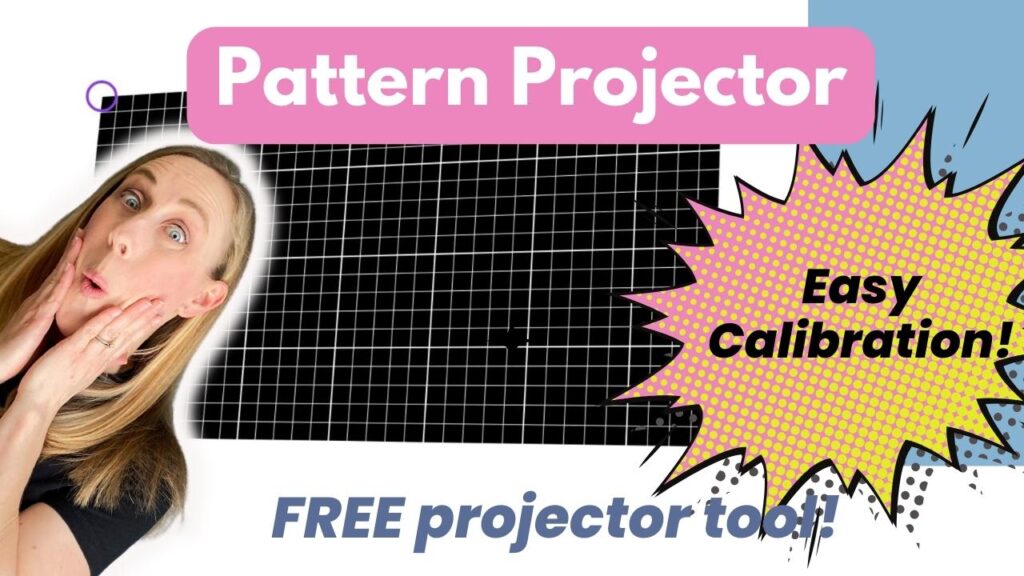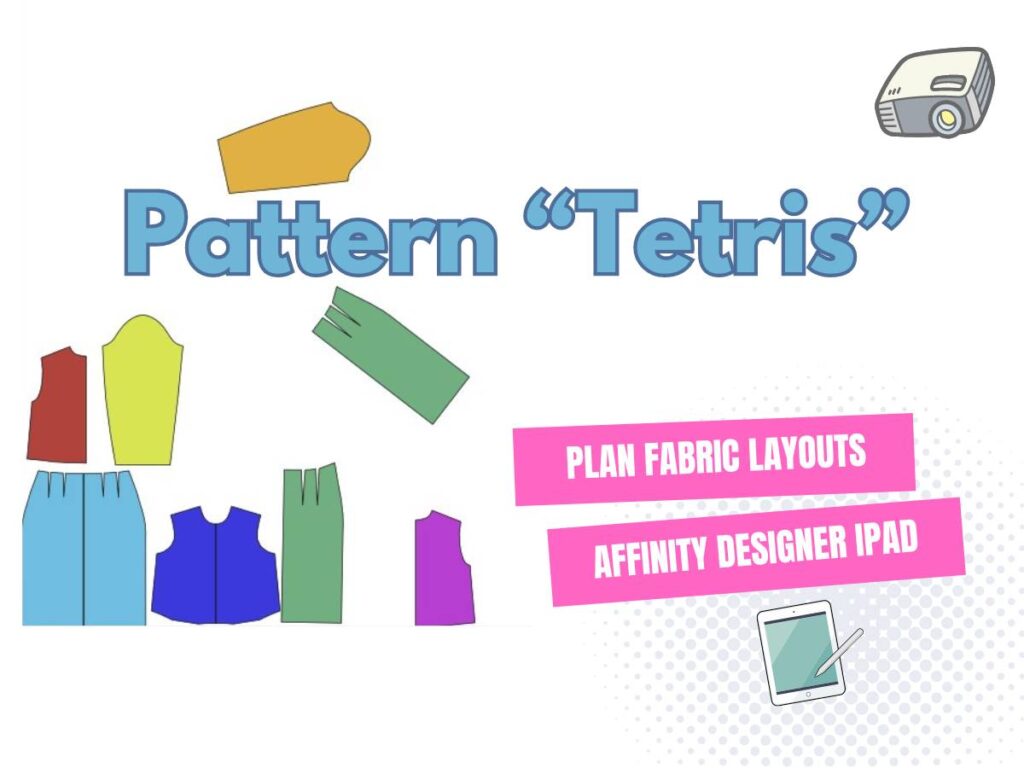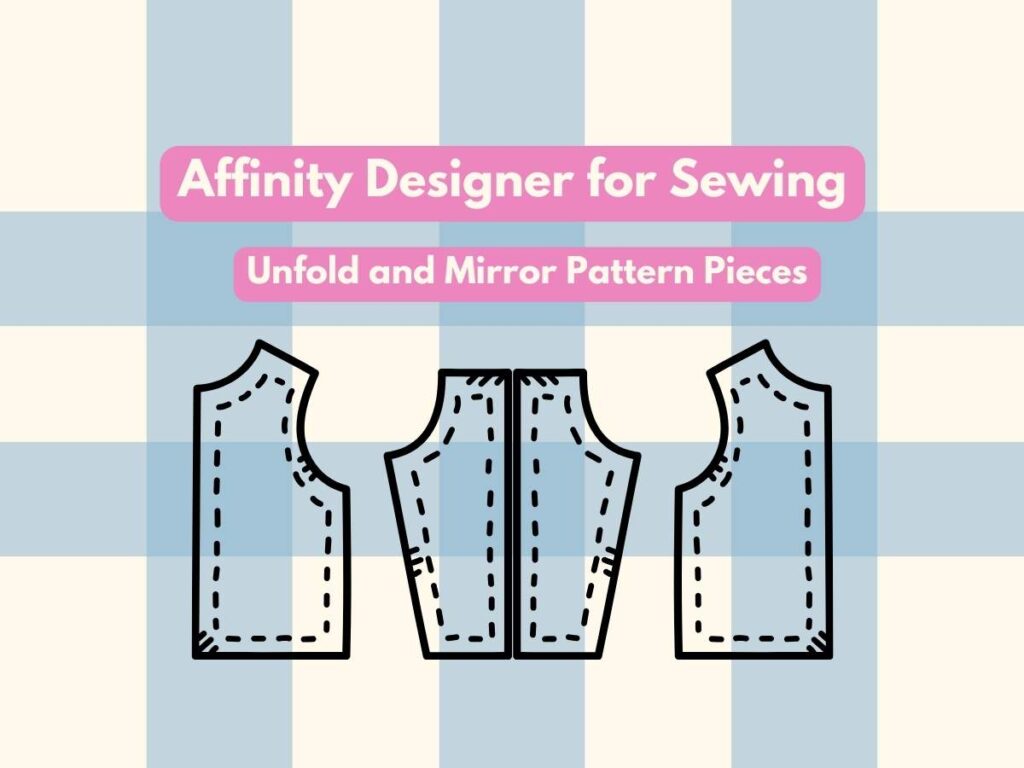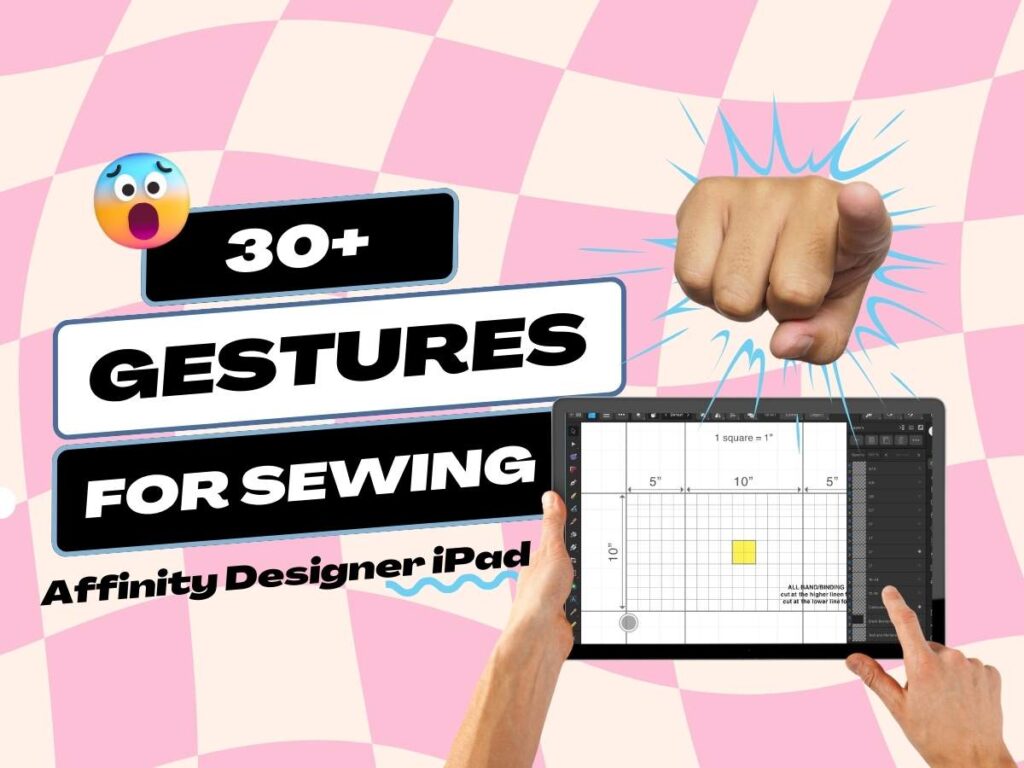Last updated on September 28th, 2022 at 12:56 pm
*This post may contain affiliate links and we may earn a small commission if you click on them.
Rarely can you get the perfect fitting pattern directly from one size. That is where learning how to grade when pattern projecting comes in handy! Can you still grade patterns when projector sewing?
Yes, you can digitally grade patterns for projecting! Get the same results as if you were using paper patterns. Here are three ways you can grade patterns when using a projector for sewing: “On the fly”, in Adobe, and using Inkscape.
“On the Fly” Directly onto Fabric
Sometimes the most time efficient way to grade is “on the fly”. This means making the grading directly onto the fabric using a fabric marking tool or cutting. If you don’t have a very complicated grading to do, then this may be the way to go! This will not “save” the grading for future makes, but it is the quickest way to get a project done. I recommend this method for those that are already very familiar with how to grade, since there is often little margin for error.
I will sometimes use this method when making outfits for my quick-growing kids. If it is something that I will make one of before they “outgrow” the pattern modifications, then I don’t want to spend a lot of time and effort grading.
To grade “on the fly” open the pattern layers tab in Adobe and select the sizes that you will be grading between. Close the layers tab and project your pattern directly onto your fabric or tracing paper. Use the sizes to grade as you go. If you are too nervous to cut the fabric the first time you grade this way, I recommend using tailor’s chalk or a marker to draw your pattern directly onto the fabric.
How to Grade Patterns in Adobe
Did you know that you can grade directly in Adobe? The comment tools allow you to make notes and lines directly on the pattern. You can even save the file with the changes added! If you are new to using the comment tools, I recommend these two articles first: Adobe–How to grade and How to make height adjustments in Adobe.
Some patterns are “locked” in Adobe and don’t allow you to use the comment tools. A quick work-around for this is to run the pattern through PDF Stitcher. You do not need to make any changes to the file, just select the input and create an output file, then click “Generate”. You should then be able to use the comment tools! Like magic! This works on pattern instruction PDFs too. This will let you use the size chart to make notes on a select the sizes you will be grading between.
Using the polygon tool, you can draw lines between sizes or grade for a different height and width in the pattern.
How to Grade Patterns in Inkscape
Inkscape is a completely FREE program that opens up so many possibilities in when projector sewing. Inkscape is a quick way to unfold and mirror pattern pieces. Make sure to check out the tutorial on unfolding in Inkscape if you haven’t already!
Inkscape also makes it easy to grade patterns for projector sewing. There are many ways to accomplish this in Inkscape, but I’m going to review one of the simplest ways. If you have trouble with a particular pattern, don’t forget to ask the Projectors for Sewing Facebook Group for help.
Step 1: Import pattern with sizes you need.
Import only the sizes you need to blend and grade between using PDF Stitcher. This will save you so much time deleting unnecessary sizes or creating layers in Inkscape.
Step 2: Duplicate a size layer to work with nodes.
Ungroup the pattern until you can select one size at a time. First time using Inkscape? Learn the basics in the How to Unfold in Inkscape tutorial. Duplicate one of the size layers to use to grade. I usually select the smaller size, or the size in the middle of the sizes that you are grading in between. Select the pattern piece, then push CTRL+D (Command +D on Mac) to duplicate. Change the color of the duplicated layer by keeping it selected and at the bottom of the Inkscape screen find the color you want to change it to. Press SHIFT+(click) to set the stroke color. If it filled the entire pattern, undo (CTRL+Z). Then, make sure to press SHIFT while clicking the mouse on your color choice.
Changing the color of the duplicate layer will help you to keep track of what you are working on and the original size lines!
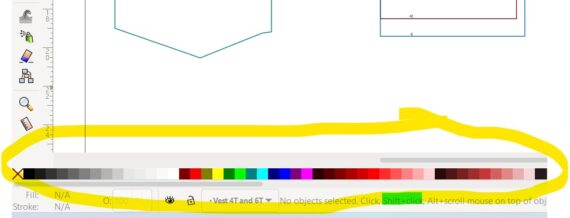
Step 3: Grade and blend using the node tool.
Select the working layer for the pattern piece that you are on. The node tool is on the left menu at the top, just under the arrow. It is an arrow with dots. When you click on the node tool, then on the pattern layer, dots or “nodes” will appear. You can edit these nodes by clicking and moving them!
Move the nodes to match where you need to grade. In the example below, I used the nodes to change this Little Gentleman’s Vest by Peekaboo Patterns to be 4T width and 6T height.
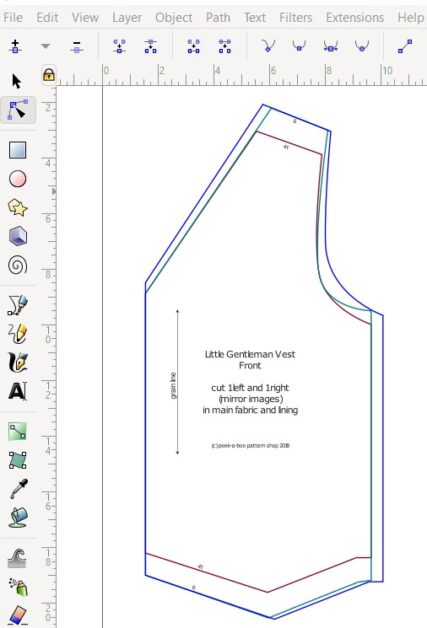
Step 4: Reduce clutter on graded pattern pieces
The next step is optional, but really helps clean up a pattern for projecting. Ungroup the duplicated layer and the original layer (CTRL+SHIFT+G). Then select and delete all the layers except for the graded layer. Use the text tool to make any notes that you want. For example, I labeled the pattern piece “Vest 4T width, 6 height”. Then, repeat these steps with any other pattern pieces that you need to grade and blend.
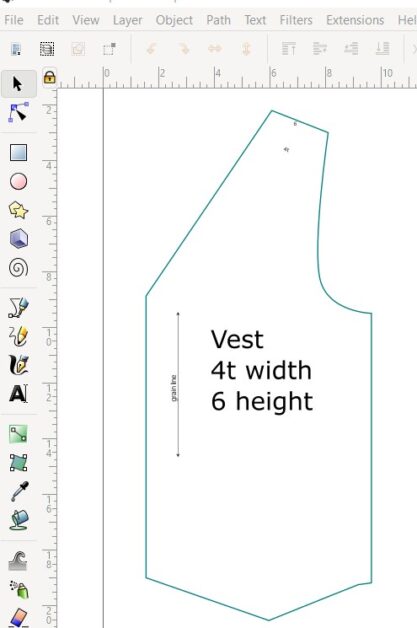
Step 5: Adjust document size and save PDF!
Open Document Properties (File>Document Properties or expand three dots on fight side of screen). Under “Custom size” select “Resize page to content”. Add margins of about 25 inches (or whatever extra room you like to work with!). Then click “Resize document to drawing or selection.
Now save by going to File>Save As. Name your newly graded pattern and save as a portable document file (PDF). Open that file in Adobe and you are ready to cut!
*Want a video tutorial of Inkscape? There are several out there. Here is one that I like (Start at 24 minutes for grading): Inkscape Class 2.
Other Ways to Grade
Are you looking for another program that will make digital pattern grading easy? It’s great that Inkscape is a free program with a lot of functionality. However, if you are constantly dealing with it freezing and crashing, this is a common problem. Affinity Designer is a program that allows you to do many of the same kinds of things, but it is not free. The next best thing to free is a one-time purchase! Affinity Designer is available for Mac, Windows, and iPad. It is about $55 USD for the computer and $22 for iPad.
Any vector editing program can perform these functions. Some work better than others for patterns and sewing. Adobe Illustrator is one that many people already have, and it works well for editing patterns!
Conclusion
Now you know how to grade a pattern when projecting! I’ve reviewed three ways that you can grade and blend sizes. The quickest way is to make “on the fly” adjustments while you are cutting. For something less “on the fly” and that’s able to be used again and again, try Adobe! The comment tools in Adobe will let you blend sizes by drawing lines with the polygon and other drawing tools. And you can save the changes to view later. For more precise blending and grading, try out Inkscape. Inkscape is a free program with a lot of capabilities! If you are new to Inkscape make sure to check out how to unfold patterns and do pattern Tetris for planning your cuts! Digitally making adjustments to get the perfect fit is not so hard with the right knowledge! Happy sewing!


